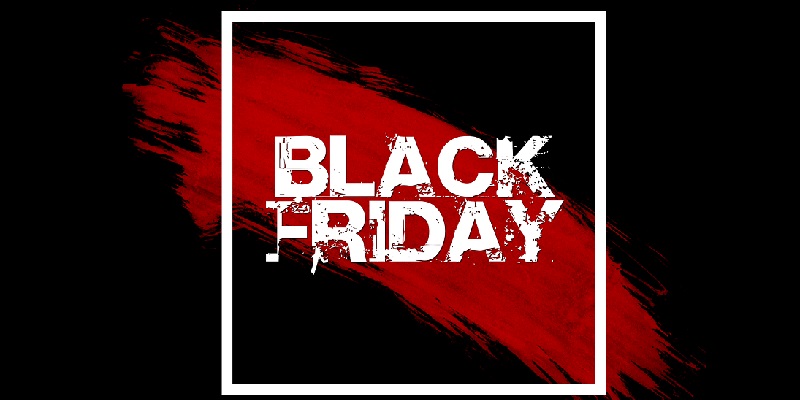Black Friday, Cyber Monday, and the holiday season present immense opportunities for brands to boost their sales and engage with customers. Among the numerous marketing channels available, email remains one of the most critical and effective tools for reaching and converting customers during this time. In this comprehensive guide, we will delve into the significance of email marketing during Black Friday, illustrating the importance of mobile optimization, crafting attention-grabbing subject lines, catering to user preferences such as dark mode and color blindness, avoiding landing page errors, tracking email performance, addressing cart abandonment, utilizing post-Black Friday sales follow-up, and prioritizing email quality assurance.
The Importance of Email Marketing During Black Friday, Cyber Monday, and the Holiday Season
Email marketing provides brands with a direct line of communication to their customers, making it an invaluable channel for promoting Black Friday deals, Cyber Monday discounts, and other holiday offers. Its personalized nature helps build trust and loyalty, and it allows for targeted and segmented messaging, ensuring that customers receive relevant promotions and stay engaged throughout the holiday season.
Mobile Optimization
In today’s digital landscape, mobile optimization is no longer just an option, it is a necessity. With the majority of consumers accessing their emails on mobile devices, brands that neglect to optimize their Black Friday email campaigns for mobile risk losing out on significant sales. Ensure that your emails are responsive, load quickly, and offer seamless navigation on mobile devices, enhancing the overall user experience.
Crafting Unique and Attention-Grabbing Subject Lines
To cut through the noise of countless Black Friday email offers, it is crucial to create subject lines that stand out. Avoid clichéd phrases and generic promotions to capture the attention of subscribers. Instead, infuse creativity, urgency, and exclusivity into your subject lines. Personalization and segmentation can also greatly improve open rates, making customers feel recognized and valued.
Addressing Users’ Preferences for Email Campaigns
In recent years, dark mode has gained popularity among smartphone users. Failing to consider dark mode compatibility in your Black Friday email designs can lead to a poor user experience and, ultimately, dismissive recipients. By adopting a mobile-optimized responsive design and incorporating subtle color variations, you can ensure that your emails are visually appealing regardless of the recipient’s preferred mode.
Considerations for Color Blindness in Black Friday Emails
Color blindness affects a significant portion of the population. Failing to take this into account when designing Black Friday email campaigns may result in important information being overlooked or misinterpreted. Use high-contrast color schemes, employ clear and descriptive text, and avoid relying solely on color cues to convey critical information.
Avoiding Landing Page Errors and 404s
One of the worst experiences for email recipients is being directed to the wrong landing page or encountering a frustrating 404 error. To prevent this, thoroughly test your email links before sending them out. Double-check that each link directs users to the correct webpage and confirm that the destination page is fully operational, providing a seamless transition from email to the desired offer or product.
Tracking Email Marketing Performance with UTM Parameters
Measuring the success of your Black Friday email campaigns is crucial for refining and optimizing future marketing efforts. Utilize UTM parameters on links in your email campaigns to track and analyze key metrics, such as click-through rates, conversions, and revenue generated. This data will provide valuable insights into the effectiveness of your email marketing strategies and enable effective decision-making moving forward.
Addressing Cart Abandonment
Cart abandonment rates peak during Black Friday due to the overwhelming number of shopping options available. To regain some lost revenue, implement cart recovery strategies by sending personalized emails to customers who abandoned their carts. Include enticing offers, clear calls to action, and a seamless checkout process to drive conversions and increase sales.
Post-Black Friday Sales Follow-Up
The work does not end once the Black Friday sales are made. Follow-up emails are essential for nurturing customer relationships and encouraging repeat business. Express gratitude, highlight any ongoing promotions or upcoming events, and provide personalized recommendations based on customers’ past purchases or browsing history. Maintaining engagement post-Black Friday can lead to increased customer loyalty and long-term success.
Prioritizing Email Quality Assurance During Black Friday
Given the heightened importance of email during Black Friday, rigorous quality assurance (QA) processes are imperative. Thoroughly test your email campaigns to ensure proper rendering across various email clients and devices. Verify that all links are functional, content is error-free, and designs are visually appealing. A flawless email experience will instill confidence in your subscribers, ultimately driving engagement and conversions.
Email marketing continues to be a powerful tool for brands to connect with customers during Black Friday, Cyber Monday, and the holiday season. By prioritizing mobile optimization, crafting irresistible subject lines, accommodating user preferences like dark mode and color blindness, avoiding landing page errors, tracking performance, addressing cart abandonment, utilizing post-sales follow-up, and implementing stringent quality assurance measures, brands can maximize their chances of success and reap the rewards of the busiest shopping season of the year.

